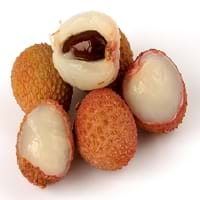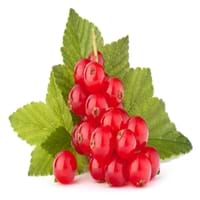Health Benefits
Cancer prevention, Cures gastro-intestinal troubles, Heart care, Muscle pain relief, Prevents blindness from diabetes
Cancer prevention, Gout treatment, Heart care, Regulation of heart rate, Treatment of rheumatism
General Benefits
Boosts immune system, Digestive aid, Fights against infections, Helps in weight loss, Maintains healthy cholesterol level, Strengthens bones
Anti oxidant properties, Controls blood pressure, Cures fever, Digestive aid, Healing of wounds, Helps in weight loss, Strengthens bones
Skin Benefits
Anti-aging benefits, Skin rejuvenation
Brightens and lightens complexion, Reduces wrinkles, Treatment of acne
Hair Benefits
Promotes longer and healthier hair, Protects hair
Protects hair
Allergy Symptoms
Coughing, Diarrhea, Headaches, Hives, Itching, Labored Breathing, Nausea, Runny nose, Swelling of mouth, tongue or lips, Vomiting, Watery eyes
Abnormally rapid heart rate, Anaphylaxis, Breathing difficulty, Hives, Itching, Swallowing difficulties
Side Effects
May cause abdominal pain, Diarrhoea, Mouth irritation, Throat irritation, Weight gain
Possibly unsafe during pregnancy
Best Time to Eat
As a snack in the late afternoon, Don't consume at night and before bed, Eat the fresh ones, avoid mixing with any other foods, don't eat after meal., Morning time (before lunch), Strictly avoid empty stomach
Best if taken as a breakfast (or empty stomach), As a snack in the late afternoon, Don't eat after meal, Morning time (before lunch)
Vitamin B5 (Pantothenic Acid)
Vitamin C (Ascorbic Acid)
Vitamin K (Phyllochinone)
Calories in Fresh Fruit with Peel
Not Available
Calories in Fresh Fruit without Peel
Not Available
Calories in Frozen Form
Not Available
Calories in Canned Form
Not Available
Type
Tree fruit, Tropical
Berry
Season
Spring, Summer
Summer
Varieties
Emperor fruit, Mauritiu, Sweet Heart, Brewster, Haak Yip and Bengal
Rovada, Stanza, Red Lake, Junifer and Jonkheer van Tets
Color
Bright red, Pink red
Red
Inside Color
Greyish-white
Red
Taste
Crunchy, Juicy, Sweet
Sour, Tart
Origin
China, Indonesia, Philippines, Vietnam
Europe
Soil Type
Alluvial, Loam, Well-drained
Moist, Well-drained
Climatic Conditions
Absence of strong wind, Cold, Dry, Without frosts
Cold
Facts about
- The seed of Lychee fruit is toxic & can adversely affect the digestive system.
- This fruit gives a smoky flavor when eaten dried.
- This fruit is a symbol of love and romance in China.
- The albino version of red currants known as white currants, are often sold as different fruit.
- Red currant tea is healthy substitute for coffee.
- There are more than 150 varieties of red currants.
Top Producer
China
Russia
Other Countries
Australia, India, South Africa, Thailand, United States of America
Belgium, France, Germany, Ireland, Italy, Netherlands, Poland, Portugal, Scotland, Spain, Sweden, United Kingdom
Top Importer
Hong Kong
Germany
Top Exporter
China
Russia
Botanical Name
Litchi chinensis
Ribes rubrum
Synonym
Nephelium litchi
Not Available
Subkingdom
Tracheobionta
Tracheobionta
Division
Magnoliophyta
Magnoliophyta
Class
Magnoliopsida
Magnoliopsida
Order
Sapindales
Saxifragales
Family
Sapindaceae
Grossulariaceae
Species
L. chinensis
R. rubrum
Generic Group
Soapberry
Saxifrage
Difference Between Lychee and Red Currant
We might think that Lychee and Red Currant are similar with respect to nutritional value and health benefits. But the nutrient content of both fruits is different. Lychee and Red Currant Facts such as their taste, shape, color, and size are also distinct. The difference between Lychee and Red Currant is explained here.
The amount of calories in 100 gm of fresh Lychee and Red Currant with peel is Not Available and 56.00 kcal and the amount of calories without peel is 66.00 kcal and Not Available respectively. Thus, Lychee and Red Currant belong to Low Calorie Fruits and Low Calorie Fruits category.These fruits might or might not differ with respect to their scientific classification. The order of Lychee and Red Currant is Sapindales and Saxifragales respectively. Lychee belongs to Sapindaceae family and Red Currant belongs to Grossulariaceae family. Lychee belongs to Litchi genus of L. chinensis species and Red Currant belongs to Ribes genus of R. rubrum species. Beings plants, both fruits belong to Plantae Kingdom.









